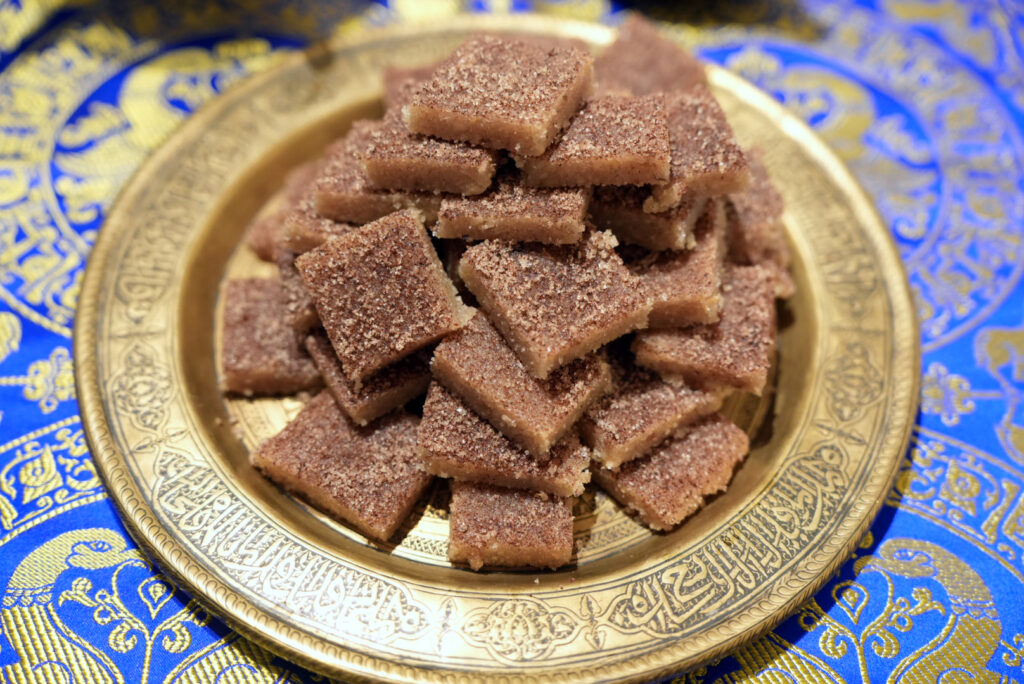This is a recreation of a recipe from The Exile’s Cookbook but ultimately goes back to Sasanid Persia. Its origins are revealed in its name jawzīnaq (جوزينق, with jawz meaning ‘walnut’), and the earliest mention goes back to a 6th-century Pahlavi (Middle Persian) text. In the Abbasid culinary tradition, it was usually known as jawzīnaj and denoted sheets of dough stuffed with nuts, sugar, etc.
As this is the very short-lived season for wet walnuts, this sweet was the ideal opportunity to put them to good use. Half of the walnuts are boiled and skinned, with the other half being used to extract the oil that will be used later on. The crushed walnuts are kneaded into a smooth mixture — ‘with a brain-like consistency’ –, with sugar on a surface smeared with the expressed walnut oil. Then it’s just a question of shaping the mixture, cutting it up into mouth-sized morsels, and sprinkling on sugar, pepper, cinnamon and cassia.
The author mentions a variation with boiled honey which results in a more elastic result, whereas he suggests adding all of the aromatic spices you have to hand, especially camphor since that is ‘the height of perfection.’ But that, as they say, will be for another day!


